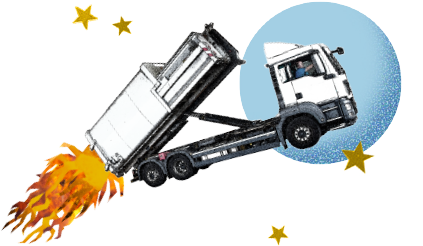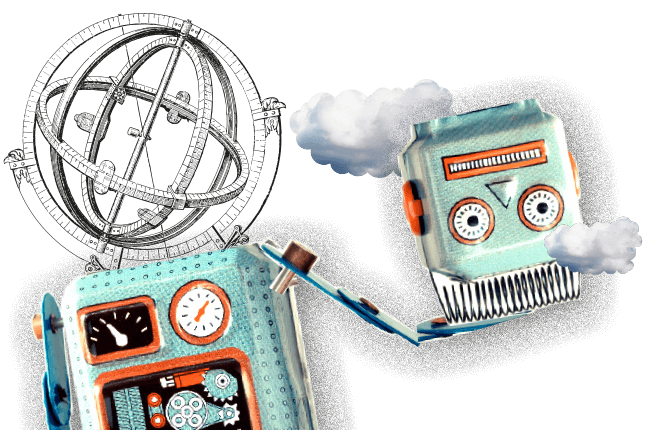Suche
REMONDIS’ business locations around the world
Being one of the leading recycling, service and water companies, REMONDIS has approximately 1,000 business locations around the globe. These can be found in over 30 countries across Europe, Africa, Asia and Australia.
REMONDIS’ business locations in Germany
REMONDIS’ business operations in Germany are managed by six regional companies. Moreover, a whole variety of specialist REMONDIS companies are based here in Germany as well.
Being a waste management expert, we remove everything – including conspiracy theories
The German government has been infiltrated by lizards? The moon landings were faked and Elvis is still alive and living incognito as a pensioner in Hunsrück? All these theories are old hat compared to the rumours about waste – a rumour mill that simply never stops turning. But why does this particular subject attract so many rumours? No idea! Maybe because people find it strange when things simply disappear. According to some, there would seem to be very little difference between ships vanishing in the Bermuda Triangle and glass vanishing in the bottle banks. More than enough reason, therefore, for us to take a closer look and bust even the most stubborn of myths. But let’s start with the old bottles and co. We’ll look into the Bermuda Triangle another time.

Waste myth no 1: Everything ends up being incinerated anyway
Statements like this can be heard time and time again. Whether a person utters them because they truly believe it or because they’re using it as an excuse to continue throwing plastic packaging into the grey bin remains to be seen. Whatever the case, the “Everything ends up being incinerated anyway” theory truly is a load of rubbish. The only waste that ends up being incinerated in Germany is residual waste – i.e. the contents of your grey or black bin. The refuse collection lorries take these materials straight to waste incineration plants – also known as waste-to-energy plants or energy-from-waste plants – for so-called thermal treatment. This means that the incineration process is used to generate electricity and/or heat, which is then normally fed into the national grid. All other waste streams – from the contents of the yellow, brown and blue bins, to bulky waste, all the way through to electronic waste – are taken to plants and facilities where all the recyclables are recovered and separated according to type. The non-recyclable materials left over at the end of the sorting process – and this really is just a tiny fraction – are then sent on for incineration. By the way, the fact that as many materials as possible are recycled for reuse and not incinerated in Germany is not entirely of our own doing. It is a statutory requirement. See the Kreislaufwirtschaftsgesetz [Federal Circular Economy Act].


Germany is not the whole world. Other countries, in particular emerging and developing countries, end up incinerating most of their waste. Regardless of whether it contains recyclable materials or not. One of the reasons, therefore, why it should be made illegal to export German waste to other countries, something that, unfortunately, still happens all too often.
Waste myth no 2: Plants can separate everything
Wouldn’t that be nice! We always do our very best to ensure that our plants and facilities recover recyclable materials according to type even when they’re delivered mixed together. But every technological process has its limits. The worst thing is not, in fact, the wrong objects that have been thrown into the bins. In most cases, these can be filtered out. No, the worst thing is the dirty objects as they end up contaminating the whole batch of materials and make them impossible to recycle. What’s more, it’s normally not possible to separate different types of waste that have been stacked one inside the other either. None of this, though, alters the fact that there is definitely a certain charm to the idea of not having to pre-sort waste in our wheelie bins and for it still to be possible to recover the different materials according to type. Both for consumers as for the circular economy. And indeed attempts have repeatedly been made to recover recyclable materials from mixed waste streams using special, fully automated separation machinery as well as mechanical-biological pre-treatment facilities. However, these methods are only really successful if the mixed waste streams have at least been segregated into some kind of general main category. Which is why we operate, for example, a state-of-the-art light packaging sorting plant in Erftstadt for handling the contents of the yellow sacks – i.e. all types of plastic, paper, cardboard and metal. And yet despite all this technology (which includes 21 different kinds of infrared separators), even this facility has its limits.

Waste myth no 3: All the old bottles end up in one and the same pile
Admittedly, when the special collection trucks empty the different bottle banks, it does look as if the green, brown and clear bottles all end up in one pile. This vehicle, though, has three special storage chambers – one for each of the bottle banks. And the different coloured bottles remain separated from each other when they reach the glass processing facility. Anything else would make little sense. Why? Because the different types of coloured glass reflect a range of different qualities. Recycled clear glass must meet the most stringent recycling requirements and is the highest quality recycled raw material sent to glassworks.
Do you know any other waste myths that are worth busting or that you yourself can debunk? Then please let us know. Ideally via our contact form






